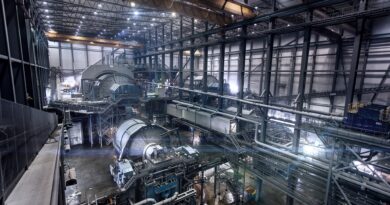Mitigating dust risks with real-time dust monitoring solutions
Mining operations, known for their dusty environments, face the critical challenge of protecting workers’ health, safeguarding the environment, and maintaining positive relations with nearby communities while ensuring regulatory compliance. As the leading value-added partner supplying M3SH monitoring solutions across Africa, Probe IMT introduces an effective solution for comprehensive air quality management – the M3SH D52 dust particulate matter monitor.
The D52 is part of a suite of monitoring solutions produced by M3SH Technology, a Canadian OEM with over 30 years of experience as an original equipment manufacturer (OEM) and strong research and development (R&D) capability. M3SH Technology is committed to creating an ecosystem of intelligent and integrated products that all work together to protect people and productivity.
CEO of Probe IMT, Gert Roselt, says “The M3SH D52 is an intelligent, sophisticated device designed to provide real-time data on dust levels, leading to immediate response measures and preventing workers from exposure to harmful dust levels. It is indispensable for protecting workers’ health, optimising operational processes, and achieving compliance with regulatory standards.”
South Africa has stringent regulations about permissible dust exposure levels in mining operations. In May, the Mine Health and Safety Inspectorate of Gauteng issued new directives emphasising the vital role of real-time monitoring systems in mitigating risks associated with occupational hazards including airborne pollutants such as dust, requiring that these be implemented in a phased manner.
“Implementing real-time monitoring helps ensure compliance with South African mining regulations and international best practice, protecting the health of employees and helping to avoid potential fines or shutdowns,” says Roselt. “M3SH Technology sensors have been carefully tested in harsh mining environments and meet all applicable standards and ratings required.”
Industrial dust and particle exposure of 1.0µm, 2.5µm, 4.0µm, and 10µm can cause serious respiratory health problems, Roselt highlights. Smaller particles pose more severe risks due to their ability to penetrate deeper into the lungs, leading to chronic diseases, respiratory issues, and even cardiovascular problems. “Regular monitoring allows for the implementation of measures to reduce exposure and protect workers’ health. High levels of dust can reduce visibility, leading to accidents on site. Dust can also cause machinery to malfunction or wear prematurely, posing additional safety risks.”
Dust from mining operations can also harm local ecosystems and contribute to air pollution, explains Roselt. “Monitoring can help mines manage and minimise this impact.”
The D52 monitor leverages state-of-the-art intelligent laser sensing technology, boasting high sensitivity for detecting particles smaller than 10 micrometres with precision. Its extensive sensor range of 0.30µm to 10µm and effective operating temperature range from -20°C to 50°C ensure dependable performance in the harshest environments. The D52 provides accurate readings of particulate matter on its easy-to-read LCD Display. Results display the time-weighted average (TWA) and particulate measured for 1µm, 2.5µm and 10µm.With wired and wireless communication, the D52 can connect to any communication system that the user requires.
A hallmark of the M3SH D52 is its integration with automated ventilation or dust suppression systems, significantly enhancing workplace safety. The device’s rapid response time of less than 60 seconds, coupled with flexible installation options—whether mobile or fixed—and compatibility with wireless or site-specific interfacing, supports seamless integration into diverse work environments.
The D52 monitor is designed for low maintenance thanks to its self-cleaning capabilities, a feature that minimizes downtime and operational disruptions. Ensuring regulatory compliance in mining, manufacturing, and construction industries, the M3SH D52 represents a pivotal tool in maintaining both operational efficiency and worker safety.




